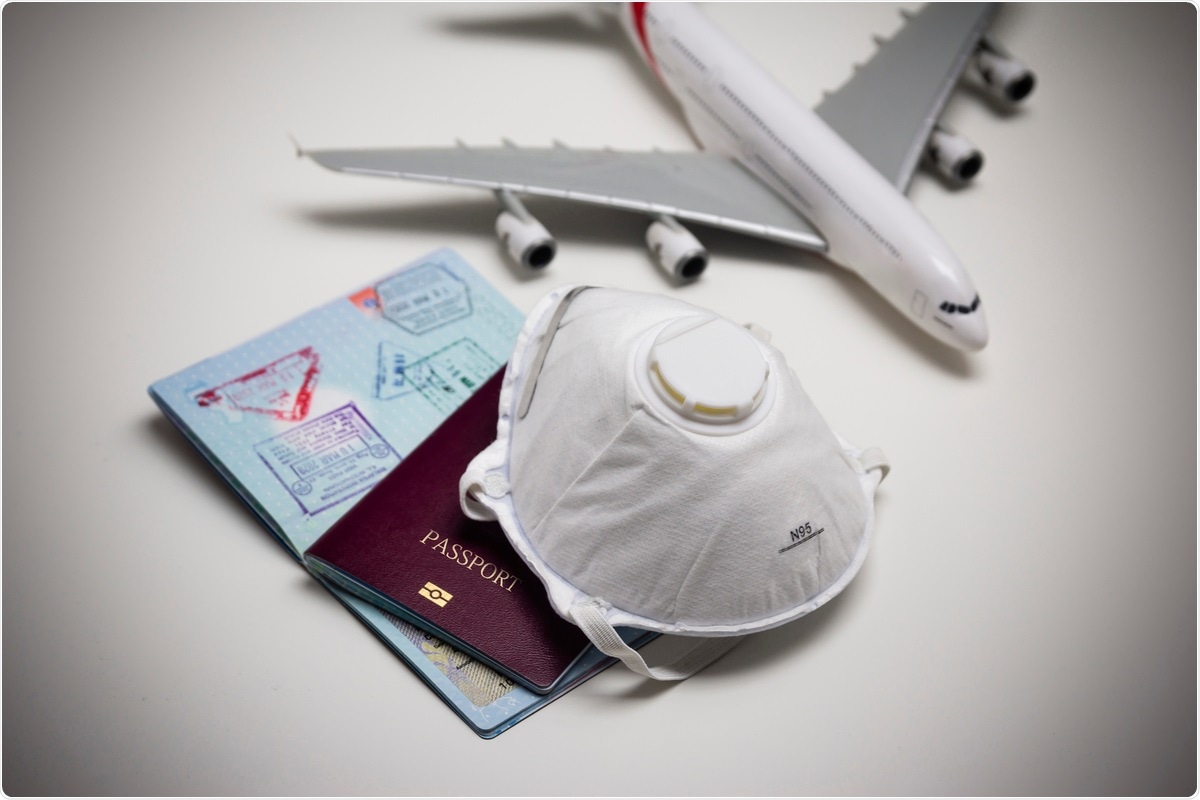Severe acute respiratory syndrome coronavirus 2 (SARS-CoV-2) has shown low transmission rates on flights and more so in domestic flights with short in-flight durations. Face masks are effective and play a crucial role in preventing the spread of coronavirus disease-2019 (COVID-19).
 Study: Transmission of SARS-CoV-2 during a 2-h domestic flight to Okinawa, Japan, March 2020. Image Credit: zuzana caprnkova/ Shutterstock
Study: Transmission of SARS-CoV-2 during a 2-h domestic flight to Okinawa, Japan, March 2020. Image Credit: zuzana caprnkova/ Shutterstock
A new study published in Influenza and Other Respiratory Viruses investigated a cluster of COVID-19 infections among travelers who were likely exposed to an index patient in an airplane and tested the associated risk of infection based on face mask use and passengers' seat proximity to the index patient.
The study
This cohort study described SARS-CoV-2 infection clustering among passengers and crew on a domestic flight on March 23, 2020, from City X in Prefecture A to Naha, Japan, wherein a passenger (a man in his thirties with symptoms of cough and fever) had traveled without a face mask.
The airplane was a Boeing 737-800 and had 177 economy-class seats. The air recirculation system was equipped with high-efficiency particulate air (HEPA) filtration, which was refurbished on February 15, 2020. The airplane had 80.2% seat occupancy – with the index patient, 141 other passengers, four flight attendants, and two pilots being onboard.
Passengers with seats within two rows from the index patient were tracked. Initially, 82 out of all 141 passengers were interviewed. The passengers were notified about their potential exposure to SARS-CoV-2 infection and were asked to self-quarantine and self-monitor until April 6, 2020. The airline flight attendants were similarly informed.
A Follow-up investigation was conducted during April 26–29, 2020, through a validated questionnaire and telephonic interview, including questions on – characteristics, seat assignment, face mask use during the flight journey, and symptoms of illness until 34 days after travel. Data of confirmed cases and specimen residue used for diagnosis were collected from the local health authorities.
Univariate and multivariate logistic regression analyses were used to calculate the gross and adjusted relative risk of COVID-19 among passengers seated within two rows from the index case or those wearing masks.
Results
The 146 individuals on board had a median age of 26 years, of which 50.7% were males. Among these passengers, 14 confirmed cases and six probable cases were identified. None of the confirmed cases had had close contact with a confirmed COVID-19 patient other than on the flight.
The genome sequence of the virus was determined in 12 out of the 14 confirmed cases, which were identical to that in the index case, classified as the progeny of the Europe-related Japanese isolates (Pangolin lineage B.1.1), or differed by only one nucleotide.
There were only two family clusters among the 14 confirmed cases, and the secondary attack rate was 9.7%. The relative risks and 95% confidence intervals (CIs) of inappropriate use or nonuse of face masks and passengers seated within two rows from the index patient were 2.46, 4.6, and 4.8, respectively. Travel without a face mask was an independent risk factor after adjusting for seated within the index patient's two rows.
Discussion
Epidemiological-genomics analyses indicated that the in-flight transmission likely occurred through infected respiratory droplets and infected micro-aerosols. The findings establish the effectiveness of using face masks among passengers and flight attendants during commercial air travel.
The potential for in-flight transmission of COVID-19, especially through aerosol, is low due to HEPA filters in aircraft. The two-row rule (passengers seated within two rows from a confirmed patient are considered concentrated contacts and at higher risk for droplet infection) is internationally accepted.
Most passengers who got infected after travel were seated more than two rows away from the index case in this flight. Thus, the probability of infected micro-aerosols as being the causative factor is high. The risk of airborne transmission of SARS-COV-2 through micro-aerosols has also been confirmed recently.
The results suggest that contact tracing for airplane events may be considered to identify infection transmission sources moving forward. The findings inferred that contributing factors for COVID-19 infection transmission in fights are viral load, use of face mask by passengers, the ventilation system in the cabin, location of the infected person's seat concerning the cabin airflow.
A simple screening system should be implemented before boarding flights to reduce the risk of infection to passengers, which is already in practice in some countries. Additionally, for individuals who could have had potential exposure or contact with confirmed COVID-19 cases or travel history to a COVID-19 epidemic area over the past 14 days, performing SARS-CoV-2 polymerase chain reaction (PCR) or rapid antigen testing before boarding the flight may be advised. Furthermore, a universal mask-wearing policy must be followed in flights.
Journal reference:
- Toyokawa, T. et al. (2021) "Transmission of SARS‐CoV‐2 during a 2‐h domestic flight to Okinawa, Japan, March 2020", Influenza and Other Respiratory Viruses. doi: 10.1111/irv.12913.